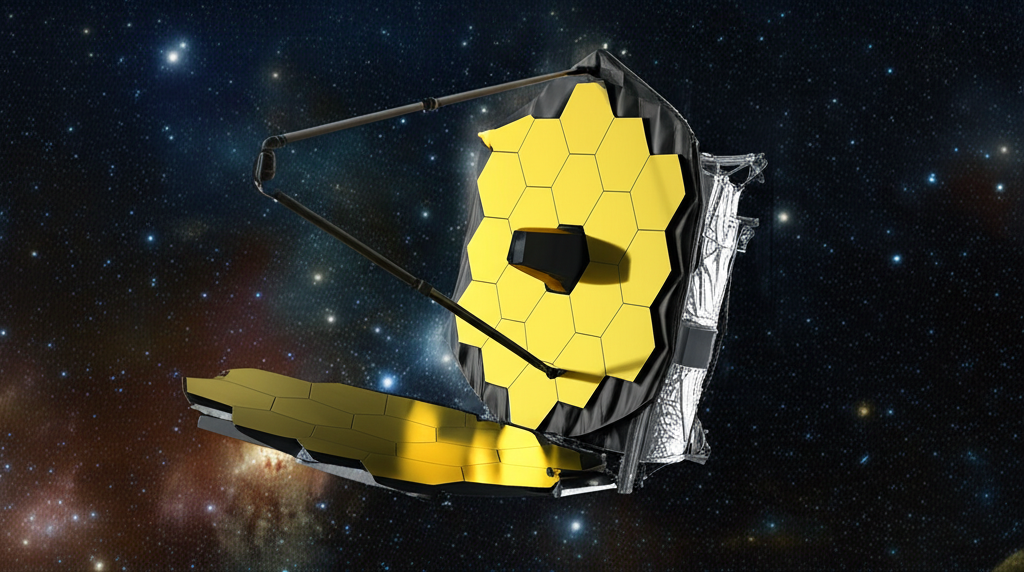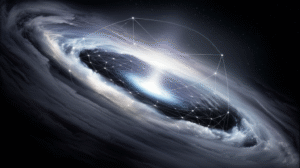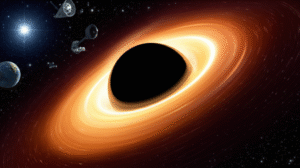Unveiling the Cosmos: The James Webb Space Telescope’s Groundbreaking Discoveries
The James Webb Space Telescope (JWST) has ushered in a new era of cosmic exploration with its groundbreaking images and advanced infrared technology. Its first image revealed the “deepest view” of the universe ever captured, showcasing thousands of galaxies dating back over 13 billion years—far surpassing the Hubble Telescope thanks to its 6.5-meter primary mirror and infrared capabilities. JWST is not only decoding the formation of early stars and galaxies but also analyzing exoplanet atmospheres for potential signs of life. Its mission extends to studying black holes, dark matter, and fostering global collaboration between NASA, ESA, and CSA. Experts predict JWST will revolutionize our understanding of the universe, from the origins of the Big Bang to the possibility of extraterrestrial life.

Introduction
The James Webb Space Telescope (JWST) marks the dawn of a new era in astronomy. Its mission focuses on exploring the universe’s earliest galaxies, stars, and planets. JWST’s advanced technology allows scientists to study cosmic phenomena with unprecedented clarity. This telescope plays a crucial role in advancing our understanding of space. Its discoveries could reshape our knowledge of the universe’s origins and evolution.
The First Glimpse: Deepest View of the Universe
The James Webb Space Telescope (JWST) unveiled its first full-color image, showcasing the deepest view of the universe ever captured. This historic snapshot reveals thousands of galaxies, some appearing as they were over 13 billion years ago. The image’s clarity and depth are a testament to JWST’s advanced technology, including its 6.5-meter primary mirror and sophisticated infrared instruments.
The Science Behind the Image
This groundbreaking image provides invaluable insights into early galaxy formation and the universe’s infancy. JWST’s ability to observe in the infrared spectrum allows it to see through cosmic dust, uncovering stars and galaxies previously hidden. Moreover, its sensitivity enables astronomers to study the universe’s first light, offering clues about the Big Bang and the cosmos’s evolution.
Comparing Giants: JWST vs. Hubble
When compared to the Hubble Space Telescope, JWST’s images are significantly sharper and more detailed, especially in the infrared range. Hubble’s visible and ultraviolet observations laid the groundwork, but JWST’s infrared capabilities push the boundaries further. This advancement in infrared astronomy not only enhances our understanding of the universe but also paves the way for future discoveries about dark matter, exoplanets, and the origins of life.
Beyond the First Image: JWST’s Ongoing Mission
The James Webb Space Telescope (JWST) continues its mission with exciting targets. These include exoplanets, star formation regions, and black holes. JWST plays a key role in solving universe mysteries.
Exploring Exoplanets
JWST will transform our knowledge of exoplanet atmospheres. It seeks signs of life by analyzing chemical compositions. This marks a leap in space exploration.
Peering Into Star Nurseries
The telescope reveals how stars and planets form. It penetrates cosmic dust clouds with advanced infrared technology. This sheds light on cosmic creation processes.
The Future of Astronomy With JWST
The James Webb Space Telescope (JWST) promises to revolutionize our understanding of the cosmos. Experts predict it will uncover new galaxies, stars, and possibly signs of life. These discoveries could challenge existing theories about the universe’s origins and evolution.
JWST’s advanced technology allows it to peer further into space than ever before. Consequently, it may detect the first light from the universe’s earliest stars. This could provide clues about how galaxies form and evolve over time.
The telescope is a product of international collaboration, involving NASA, ESA, and CSA. Its data sharing policies ensure scientists worldwide can access its findings. This open approach fosters global cooperation in unraveling the mysteries of space.
Future discoveries by JWST could also impact our search for extraterrestrial life. By analyzing the atmospheres of exoplanets, it might find evidence of habitable conditions. Such findings would significantly alter our place in the universe.
Voices From the Cosmos: Expert Opinions
The James Webb Telescope (JWST) has sparked excitement across the scientific community. Here’s what experts say about its impact.
- NASA Administrator Bill Nelson remarked, ‘JWST opens a new window into our universe’s past.’
- Dr. Jane Rigby, an astrophysicist, shared, ‘Its clarity surpasses Hubble, revealing unseen cosmic details.’
- Astronomer Dr. Carlos García reflected, ‘JWST inspires future explorers to dream bigger.’
These insights highlight JWST’s role in advancing space exploration. Its discoveries promise to shape our understanding of the cosmos for generations.
Citations and Further Reading
For those interested in delving deeper into the James Webb Telescope discoveries, the following resources provide valuable information:
- NASA’s Official JWST Page – Offers the latest updates and images from JWST.
- The Science of JWST – Explores the telescope’s scientific objectives in detail.
- Comparing Hubble and JWST – Highlights the differences between the two telescopes.
- JWST and Exoplanet Research – Discusses JWST’s role in studying exoplanet atmospheres.
- The Future of Space Exploration – Speculates on how JWST could change our understanding of cosmic history.








